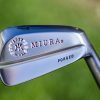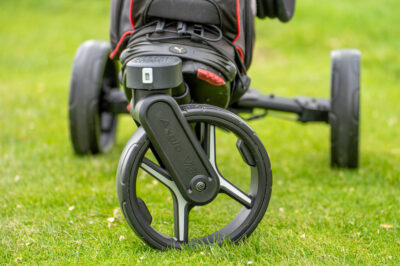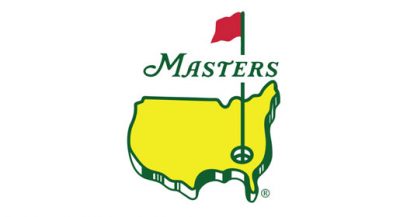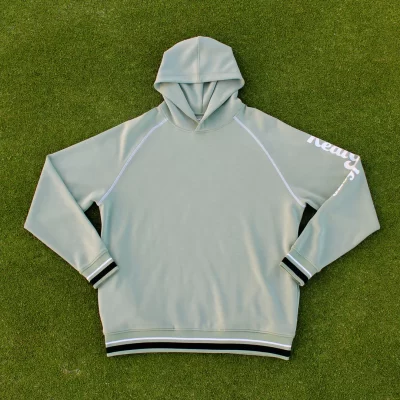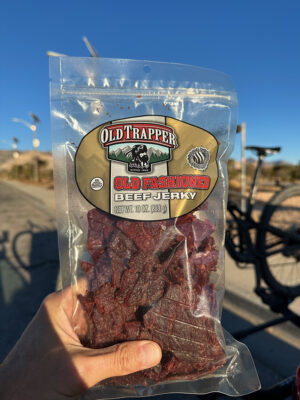Precept Distance iQ 180 Golf Ball Review
Categories: Golf Balls • Golf Equipment • Reviews
Tags: Golf Ball • Precept
During round one of the first PGA tournament of 2008, the Mercedes, a commercial (with Nick Price and Paula Creamer) reminded me of a couple of golf ball reviews I need to take care of. The first, the Precept Distance iQ 180.
Precept Distance iQ 180 Technology
The iQ 180 is a two piece “soft distance ball.” Soft and distance in years past haven’t been synonymous but these days they are. The hip thing right now in golf balls is low compression, resulting in softer feel. The iQ 180 fits the bill but in a slightly different way than other balls:
The iQ 180’s core employs Gradational Compression Technology. I’m not sure how golf companies continue to come up with this tech jargon but it sounds pretty cool. “GCT” is a process where the compression level of the core varies from center outward. The ball deforms more while being impacted by the club. In my terms, the ball feels nice and “mushy” and you can really feel it on the face of the club. This “mushyness” (yeah I know) gives the average player more distance.
The cover of the ball is a soft Ionomer plastic which reduces sidespin. Less sidespin means straighter shots, more accuracy.
The soft cover has no seam. Thus the buzzword you hear all the time: “Seamless technology.” There are 330 dimples which provide nice, consistent ball flight.
Titleist NXT Extreme Golf Ball Review
Categories: Golf Balls • Golf Equipment • Reviews
Tags: Golf Ball • NXT Extreme • Titleist
Titleist has released new versions of the NXT Tour golf ball, the NXT Extreme and NXT Tour. I’ve been playing both flavors for a while now. In this article I’ll be reviewing the new NXT Extreme Golf Ball. My NXT Tour golf ball review can be found here.
Titleist NXT Extreme Golf Ball
The NXT Extreme is is a two piece (core and cover) distance ball. It is geared toward players who need distance and don’t need as much spin around the greens, and who don’t want to spend a ton of dough on a box of balls ($34.00). This would likely include about 90% of all amateur golfers. The ball is extremely durable, so if you can keep it in play you’ll be able to play very many holes with it.
The NXT Extreme is so durable that Titleist guarantees you won’t cut open the ball during normal play. If you do, Titleist will replace your cut ball with a whole sleeve of new ones.
Technology
The core of the NXT Extreme is made of Polybutadiene.
From WikiPedia: Polybutadiene is a synthetic rubber that has a high resistance to wear and is used especially in the manufacture of tires. It has also been used to coat or encapsulate electronic assemblies, offering extremely high electrical resistivity. It exhibits a recovery of 80% after stress is applied, a value only exceeded by elastin and resilin. Polybutadiene is a polymer formed from the polymerization of the monomer 1,3-butadiene. ….Right.
The cover of the NXT Extreme is made of Surlyn. Surlyn is a Dupont plastic which is very strong and resistant to cutting.
Dimples
Titleist has long employed a 392 dimple aerodynamic design. Their research has concluded that the 392 dimple pattern provides more carry and distance. There are five different sizes of dimples which are arranged in an icosahedral pattern.
Staggered Wave Parting Design
New for this year Titleist has introduced the “staggered wave parting design.” Titleist balls, including the NXT, ProV1 and ProV1x series have all had a visible seam. What they’re doing now is staggering the dimples where the seam is, to gain that real estate on the ball. This has allowed more dimple coverage and even better results in carry, distance and spin.
AIM System
No longer do you need to draw an aiming line on your ball with Titleist’s new A.I.M. system. A.I.M. is short for alignment integrated marking. They call it a system but come on. It’s just a line, right? Perhaps not. The arrows and lines give you conscious and subconscious influence on aim and club path.
On The Course
I’m not a “hard” ball player typically. I prefer softer cover balls and I usually play the Titleist ProV1. My main two reasons are the spin around the greens and the pain (or lack thereof) when I hit full shots. I’ve been battling golfer’s elbow for several years and I’ve just about got it beat. But when I hit hard balls, or a bunch of range balls for that matter, my pain starts to come back.
I found the NXT Extreme to be “extremely” long. Like I mentioned in my NXT Tour review, the biggest distance increase I noticed was in my irons. I was taking aerial photos of the green as my approach shots flew right over by one or two extra clubs. Once I adjusted and went one or two shorter clubs down I started hitting greens again.
I’m not a bomber, but I can poke my drives out there on an average of 290 or so. I’m definitely capable of going beyond 300 when my timing is right and I hit the sweet spot. I found the NXT capable of drives well over 300 yards, but perhaps more importantly they were all fairly straight. With the Surlyn cover and the lower compression producing less spin, slices and hooks were easier to control.
Though I didn’t get any mad backspin I found that the Extreme stopped quite well on approach shots. Keeping in mind that this is a harder ball, I adjusted my shots around the green as well. Once I found the right touch or shot selection (like a bump and run), I found the consistency of the NXT Extreme excellent. I never ended up hitting a shot and wondering how my distance control was so bad.
NXT Extreme 1, Cart Path 0
One shot I hit on my home course, #13 hole, hit the cart path. This is a par-5, 528 yards. After hitting the cart path, my NXT ended up right at 145 yards out. I’d hit about a 380 yard drive, 80 of which was cart path. I examined the NXT for damage, but that Surlyn cover barely had a scratch. Other balls would be unplayable with an impact like that.
Conclusion
The NXT Extreme is a reasonably priced and very durable ball. It flies true, straight and long. It’s a bit too hard for my game and physical limitations with my elbows, but for the average amateur player this would be an excellent choice. I think the average Joe would hit a few more fairways and gain a noticeable bit of distance off the driver (and irons) compared to other golf balls.
For more pictures of the NXT and other Titleist products, click here to visit the Hooked On Golf Blog Titleist image gallery.
New Titleist NXT Tour
Categories: Golf Balls • Golf Equipment • Reviews
Tags: Golf Ball • NXT • Titliest
Titleist has released new versions of the NXT Tour golf ball, the NXT Extreme and NXT Tour. I’ve been playing both flavors for a while now. In this article I’ll be reviewing the new NXT Tour. My NXT Extreme review will be coming up in the next week or so.
Titleist NXT Tour Golf Ball
The NXT Tour golf ball is aimed at the average to high level golfer. The ball provides a combination of distance off the driver and control with the shorter clubs, and a price point ($40.00) which is more affordable.
Technology
Multi Layer Construction
Layer One – The Core
The solid yet soft inner core is made of Polybutadiene. Don’t worry, I had no idea what Polybutadiene was either until I researched for this article.
From WikiPedia: Polybutadiene is a synthetic rubber that has a high resistance to wear and is used especially in the manufacture of tires. It has also been used to coat or encapsulate electronic assemblies, offering extremely high electrical resistivity. It exhibits a recovery of 80% after stress is applied, a value only exceeded by elastin and resilin. Polybutadiene is a polymer formed from the polymerization of the monomer 1,3-butadiene.
Layer Two – The Outer Core
The outer core, at 1.58? in diameter, is also made of Polybutadiene. The extra layer helps provide distance and a softer feel at impact.
Layer Three – The Cover
The NXT Tour cover is made of Fusablend. Fusablend is a proprietary material Titleist uses which provides the player with a great combination of durability yet soft feel and spin around the greens. Durability AND spin are tough to employ in the same ball.
The Fusablend cover comes in the new “Pro White” color, which is very vibrant and easy to spot anywhere on the course.
Dimples
Titleist has long employed a 392 dimple aerodynamic design. Their research has concluded that the 392 dimple pattern provides more carry and distance.
Staggered Wave Parting Design
New for this year Titleist has introduced the “staggered wave parting design.” Titleist balls, including the ProV1 and ProV1x series have all had a visible seam. What they’re doing now is staggering the dimples where the seam is to gain that real estate on the ball. This has allowed more dimple coverage and even better results in carry, distance and spin.
AIM System
No longer do you need to draw an aiming line on your ball with Titleist’s new A.I.M. system. A.I.M. is short for alignment integrated marking. They call it a system but come on. It’s just a line, right? Perhaps not. The arrows and lines give you conscious and subconscious influence on aim and club path.
On The Course
I expected the NXT Tour ball to be a bit harder in feel than the ball I normally play, the ProV1 (regular flavor, not the ProV1x). I’ve had golfer’s elbow for several years and hard (a.k.a. “distance”) balls really kill my elbow, but soft ones don’t. I was pleasantly surprised to find that my “princess and the pea” golfer’s elbow didn’t hurt when hitting drivers with the NXT Tour.
I found the distance off the driver and long irons to be wonderful. I hit the NXT Tour as far as any other ball I’ve tried with my driver. I found I was able to work the ball to a nice fade or draw at will, or at least as much as my swing allows on any given day.
The most profound difference between the NXT series (not just the Tour version mind you) and other balls I’ve played, was the distance I had with my irons. The first shot I hit an iron with was on my home course, #2 hole. My 170 club is my 7-iron. My 2nd shot on this 468 yard par 4 was right on 170 (yes you math majors, that was a 298 yard drive with the NXT Tour). I pulled my 7-iron and took dead aim at the middle flag. I put a perfect swing (for me at least) and the ball launched right at the flag. I was expecting it to land pin high and release a few feet long but no. The NXT Tour flew over the pin, over the green, over the hill behind the green. That 170 yard shot CARRIED at least 190. Woa.
I thought that was just a fluke but the rest of the round I discovered that it wasn’t. My iron play has ended up 10-20 yards longer with the new NXT’s. It almost became a joke when I was hitting my gap wedge 145 and my buddies thought I was a candidate for the new PGA Tour steroid testing…
Around the greens I found the NXT Tour to be quite good. Mind you I’m used to the precise spin you get with a ProV1. I’d say the NXT Tour is about 90% as “spinny” of a ball for me as the ProV1. I found that just about any shot I tried around the greens like flops, runners, two-hop-stoppers all performed well.
Durability
One area the NXT Tour outperforms the ProV1, ProV1x and many other balls is durability. Of course the cover is a little harder and that’s why. I can chew up balls with my great wedges but the NXT doesn’t get bet up by them. The only time I’ve had to take an NXT Tour out of play is when it had a cart path issue.
Conclusion
Ian McAllister is right. His wreched NXT golf ball has added fun to my game, and distance.
If you want a performance golf ball, but don’t want to spend the dough that companies are charging for their highest end balls, the NXT is the ball for you.
Click here for the Hooked On Golf Blog Titleist Photo Gallery.
Improved Callaway HX Tour 56 Review
Categories: Golf Balls • Golf Equipment • Reviews
Tags: Callaway • Golf Ball • HX Tour 56
I was given a new box of Callaway HX Tour 56’s (the ball Phil Mickelson plays) to try a few weeks ago by Guy, a good friend and the pro at my home course. My buddy told me these were hands down the best golf ball he’d ever played. Of course he’s biased toward Callaway but I processed what he said and promised him I’d play these “new and improved” HX Tour 56 golf balls.
Technology
The core of the HX Tour 56 is made out of a proprietary “fast and soft” rubber called Polybutadiene. The core is “large” in comparison to other golf ball cores due to the ball having a thin cover.
There’s a “boundary layer” between the core and outer layer which is a little more firm. This layer helps your drives stay straighter yet helping the ball have less spin.
The outer layer is made of a soft urethane material. The soft urethane provides low driver spin for straighter shots but still provides spin for controlling approach and short game shots.
The HX in the name stands for HEX which is the shape of some of the dimples on the ball. I say some because some dimples are six sided and some are eight sided (hexagons and pentagons). There are also “sub hex” dimples which are deeper. The hexagon and pentagon shaped dimples are what make the HX series of golf balls fly with less drag, more consistency and supposedly better flight in the wind.
On the course
I’ve been a fan of the HX series going clear back to before the HX Tour. Remember the old HX Red and HX Blues? I loved the HX Red back in the day.
The first thing I need in a golf ball is for it to be soft enough that it doesn’t flare up my golfer’s elbow. If I play hard golf balls, that condition can reappear after only a couple of shots. I like the soft feel of the new and improved HX Tour 56 and fortunately it does not flare up my golfer’s elbow.
Off the driver the ball flight of the HX Tour 56 is very different for me than other balls I’ve tried. I get much more carry and less roll with the 56. The ball flies out low and about 2/3 of the way it seems to climb up. I wouldn’t quite call it ballooning but that’s the only other word I can think of to describe the flight. The golf ball goes out, climbs up and then drops down with little roll. I find the distance to be great and equal to just about any other premium ball I’ve played but I expect it to be shorter since it’s all carry and little roll.
Approach and short game
For me it seems there’s a little less spin on wedge shots than the older 56, which is just fine. I find that when I hit short irons to the green I can get major spin back if I really clip one and the greens are soft. I don’t usually want that much spin though and the usual spin for the 56 is more of a hit and stop type. I find that my wedges and short irons are within 2-3 feet of the ball mark. When you figure that out you just start pin hunting because you know the ball will be close to where it hit.
When hitting shots around the green I find there’s a little less spin than a Titleist ProV1 so I get a little less check and a little more roll. This is not necessarily bad. I just need to make sure I remember that when executing the shot.
Putting with the 56 is nice. The ball has a very nice feel when stroking it. I find I can judge distance and putt speed very well with it. The speed is consistent as well, which doesn’t happen with some other balls I’ve tried.
Durability
The biggest difference I’ve noticed in the “improved” version of the HX Tour 56 is the durability. The older HX Tour balls (the black or the 56’s) were not very durable at all. Three or four 100 yard wedge shots and I’d have a ball missing 1/3 of it’s cover material. Those hex dimples couldn’t do their magic if they weren’t there! The newer 56 seems to have solved much of that issue so I can get more play out of the ball before having to replace it. The image here is of an HX Tour 56 after I played 36 holes with it.
Conclusion
The Callaway HX Tour 56 is definitely “improved” and is one of the best premium golf balls out there. My ball flight is higher with the 56 than other premium balls which can be an advantage when trying to hit shots which need more carry. The spin amount and control you have in the short game is more than adequate. Best of all, the durability now makes it sensible to pay the bucks they want for these balls. I had a hard time legitimating that expense before.
You can pick up the Callaway HX Tour 56 golf balls at Edwin Watts Golf.
Click here to visit the Hooked On Golf Blog Callaway photo gallery.
TaylorMade TP Red Golf Ball Review
Categories: Golf Balls • Golf Equipment • Reviews
Tags: Golf Ball • TaylorMade • TP Red
The 7th and final day of my “7 straight days of golf equipment reviews” 🙂
The TaylorMade TP Red golf ball is one of two new offerings, the Black being the other. The Red is considered the higher spin and/or softer of the two balls.
I’ve been playing the TaylorMade TP Black and Red golf balls for a while now (being a top golf blog has it’s preveleges…hehe). My friends and even the local TM sales reps envy me. Sometimes I show the TM reps their new gear before they get their hands on it.
Technology
This multi layer ball has a large core made of a rubber based neodymium compound. I’m very familiar with neodymium because in my other world (the audio industry), some microphones employ neodymium magnets in their circuitry. Neodymium magnets are much more powerful than standard magnets. What this has to do with golf ball cores is beyond me but it apparently lends itself to a high COR, low compression, low driver spin and high ball speed.
The cover is an ultra thin proprietary urethane which provides tons of spin and feel. TM calls this cover “ultra thin yet very durable.” In another description they say “superior durability.” We’ll discuss that later in the review.
The red has 322 dimples. TM’s dimple design is especially effective on the back half of the ball flight, adding lift for more carry and distance. I can attest to that. I saw the ball fly a little farther than I expected.
On the course
Off the driver the Red is very long. My unscientific tests tell me it’s much longer than a standard “premium” spin/control ball. I had a period of a couple of weeks where I was knocking the Red into areas on the course I don’t normally see, about 330 yards from the tee.
When you are bombing a ball this far, you’re going to be hitting a ton of wedges into greens. I found the Red to be exceptionally responsive to my wedges and short game. I could easily hit a more controlled and less “wristy” shot and have the ball land on the green and stop instantly.
If I pounded down on the ball harder and got a little more wrist action with the wedges I could get what I like to call “Phil super spin.” I had one shot where I got too carried away with the spin on my lob wedge. The ball hit the center of the green pin high and spun back about 25 feet off the green. The next hole I carried the ball over the entire green and spun it through the longer grass back onto the green!
Green side I loved the feel of the Red. I could close down a wedge and get some over spin for a longer runner. I could put the ball back in my stance and chop it for one of those 2-3 bounces and check shots.
Off the irons the softer compression of the Red felt nice as well. You can work the ball easily and control your distance. There’s no better feeling than feeling the ball compress on the club face for that extra thousandth of a second with a 3 or 4 iron.
Critic’s corner
“Superior durability” and “very durable” are words used to describe the Red on TM’s web site. I’m going to have to disagree here. While this is an amazing ball it is anything but durable.
The day I was bombing those 300+ yard drives I was hitting many sand and lob wedges into greens. Even a 3/4 swing with my lob wedge would result in extreme shearing or shavings on the urethane cover. After 3 or 4 sand/lob wedges the ball looked like it had hit about 10 cart paths. Even the decoration (logos and text) on the ball shaved right off.
This article I wrote a while back covers a little experiment I did on ball performance when the cover is damaged. Given what that article finds, I doubt the damage to the surface of the TM balls has much of an effect on the overall performance.
Conclusion
Though it’s not the most durable ball out there, TM TP Red is a great golf ball. It’s long, workable and great on touch shots around the green. You’ll be able to pull of many great shots thanks to this ball.
« Previous 1 2 3 Next »

